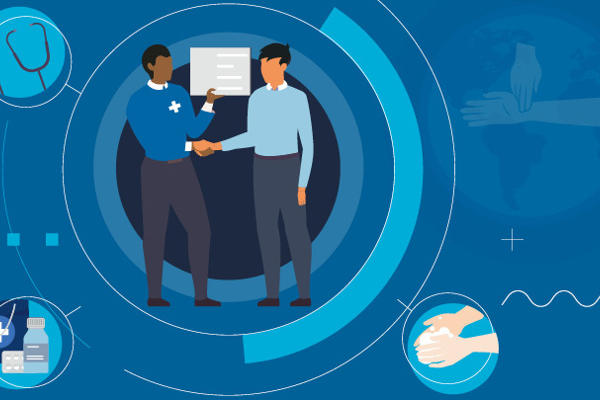In this blog, Dr Thom Daniels, Consultant respiratory physician and clinical lead for environmental sustainability at University Hospital Southampton, discusses the My Medical Record app, a digital solution that improves sustainability and the patient experience.
The urgency of climate change has never felt more real, and last year, the NHS became the first health service in the world to commit to achieving net-zero. Since then, NHS trusts and other service providers have been working on their own green plans to help reach this goal by 2040.
To have a chance of hitting this ambitious but vital target, we need to invest energy into solutions that will deliver real sustainable change to healthcare. We need to embrace a transformation of our services and consider redefining the patient-clinician experience.
My Medical Record is one such example. Developed by University Hospital Southampton (UHS), it gives patients access to information about their hospital care via an app and website and invites them to submit their own data remotely. It also includes a secure electronic messaging service that can connect patients with their clinical teams, improving two-way communication.
For some services, this collaboration of care can remove the need for routine ‘just-in-case’ appointments, instead favouring a model where clinicians can monitor from afar and patients can be invited to face-to-face appointments when it is truly needed.
Around 30,000 patients are now accessing bespoke features to help them manage their condition, with another 110,000 using My Medical Record to access details about their outpatient appointments or to view approved test results and letters as and when they become available, all on their phone or PC.

By empowering our patients to take a more active role in their care, we are creating a model of healthcare that goes beyond the bricks and mortar of a traditional hospital, and the environmental benefits are continuing to grow.
Informed by self-reported data, our teams were able to conduct over 6,900 virtual reviews throughout 2022. We estimate that this could have saved more than 151,500 miles in patient travel at UHS – equivalent to 42,900 kilos of carbon. If digital solutions like this were adopted across the entire health service, with about 125 million outpatient appointments every year,(1) this could have a very significant impact on the NHS’s collective carbon footprint, while improving patient access.
With the ability for patients to view appointment letters and other documents online, My Medical Record can also reduce services’ use of paper, ease the cost of printing and posting, and use staff time more efficiently. As of January 2023, over 14,500 of our patients have opted to go paperless for certain documents, saving over 350 kilos of carbon per year in UHS appointment letters alone.
My Medical Record continues to show the significant impact digital solutions can have on reducing UHS’s carbon footprint and will be a key tool in meeting our trust target of an 80% reduction in carbon emissions by 2032.
Find out more about My Medical Record by visiting mymedicalrecord.uhs.nhs.uk.




